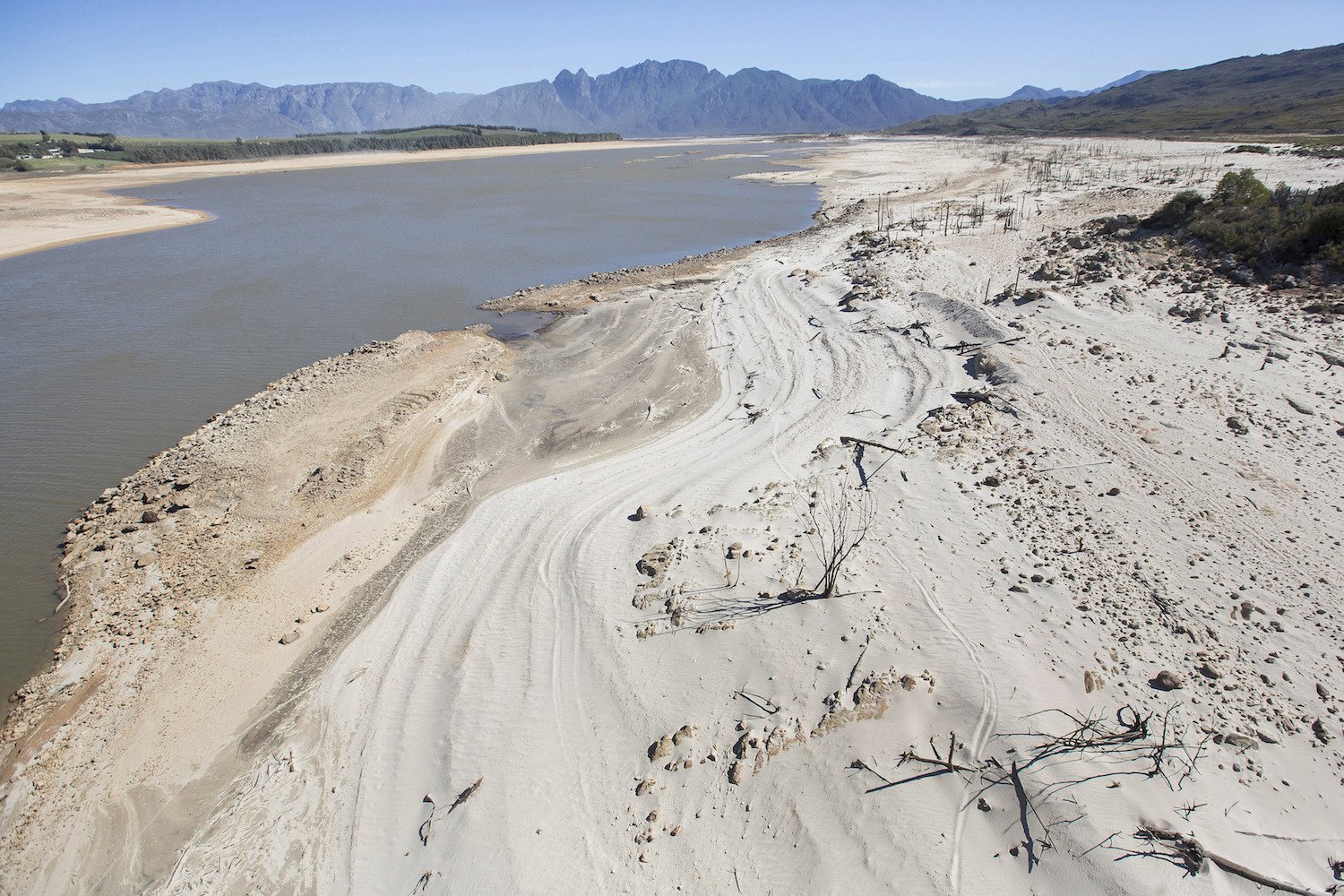 The Theewaterskloof Dam, a key source of water for Cape Town, is at historically low levels.AP Photo/Halden Krog
The Theewaterskloof Dam, a key source of water for Cape Town, is at historically low levels.AP Photo/Halden Krog
- The supply of water in Cape Town is on track to dry up by May of 2018.
- Officials are urging locals and travelers not to flush the toilets unless it’s absolutely necessary.
- The city is hoping that it won’t have to resort to turning off the taps.
The old water conservation maxim — “if it’s brown, flush it down, if it’s yellow let it mellow” — is becoming something of a rallying cry for city officials in Cape Town, South Africa.
The city’s taps are on track to dry up before May 2018.
Even travelers to the city, which is home to nearly 4 million people, are being asked to conserve. The New York Times reports that safari-, beach-, and vineyard-bound tourists arriving at the international airport are being reminded to be cautious about their flushes.
“A single flush uses 5 days of drinking water,” one sign reads. “Our taps will run dry if we don’t act now.”
The city has been grappling with the worst drought it’s seen in over 100 years, fueled by months of dry weather. In October 2017, Executive Mayor Patricia de Lille asked her fellow Capetonians to limit their water use to no more than 87 liters per day. In February 2017, the city released a list of its top 100 water consumers, the Huffington Post reported, hoping to shame people into using less.
It’s tough to know exactly how much water we each pull from the tap every day, but a single toilet flush can drain around nine liters (more than 2 gallons), and a 5 minute shower uses about 47 liters (12.5 gallons). Even a typical pot of coffee will set you back another liter or two, so it’s easy to see how quickly water usage can add up from a quick morning routine.
To help people track how much of the municipal resource they’re using every day, Cape Town has created an online water consumption calculator. Some residents have installed their own tanks to collect water for gardening and are using buckets to conserve shower water.
The city is also trying to find new water sources, since dams that supply the city are hovering at just about 30% of their storage capacity. But the efforts may not be enough to keep residents hydrated. The coastal city says it will be forced to turn off the taps when the dams reach 13.5%. At that point, they’ll switch to a system of daily water allotments that people will have to collect at checkpoints around town, according to the Times.
Cape Town isn’t the only city in water trouble. The World Wildlife Fund estimates that by 2025, two thirds of the world will be dealing with water shortages as droughts become more frequent in a warming world.
Scientists warn that cities across Asia could also get hit with big water problems by 2050 if drastic measures aren’t taken there. In addition to climate extremes like drought and environmental stressors, population growth is creating challenges around fresh water consumption. As more people in densely populated countries like China and India move out of poverty, that puts additional strain on water resources as well.
The Cape Town drought means that rainwater suppliers and well-diggers are “doing a roaring trade,” Bloomberg reports, as people who can afford to pay line up to stay supplied.
If water levels at the city’s dams don’t get too low, Capetonians won’t reach “day zero” (when the supply’s countdown runs out). But for now, there’s just a single chance of rain in the Cape Town forecast for the next two weeks.













